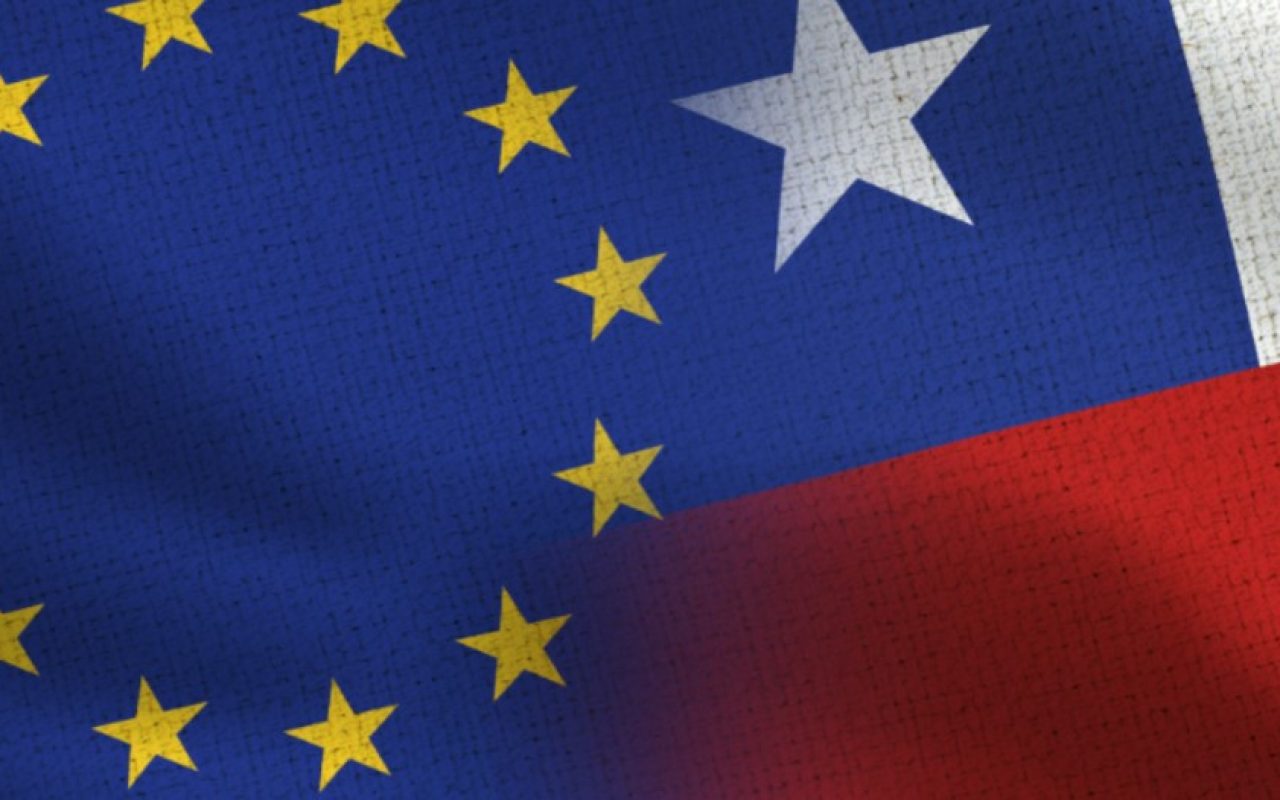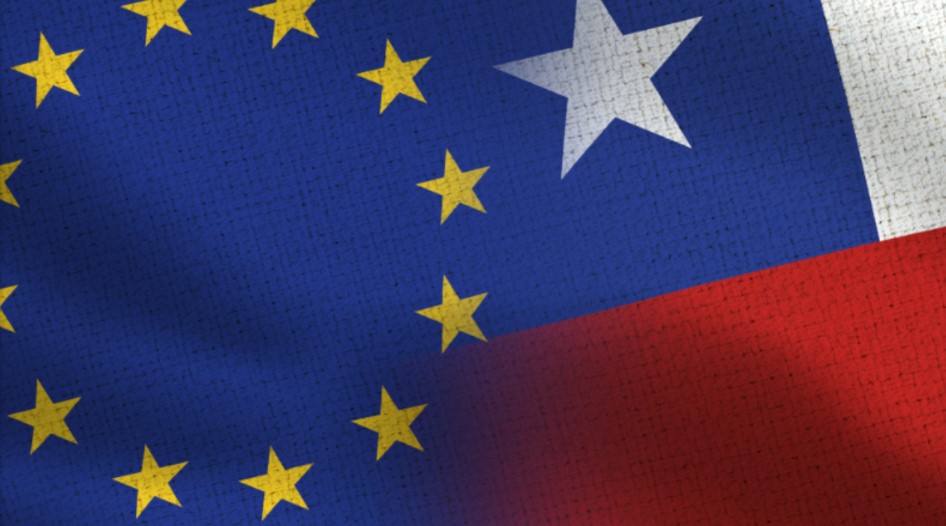
Interim Trade Agreement between Chile and the EU enters into force
“The entry into force of the ITA represents an important change to facilitate trade between Chile and the European Union. It expands the list of products that can enter EU markets without tariffs and streamlines the requirements that Chilean exporters must meet to benefit from preferential access,” explains Chile’s Undersecretary of International Economic Affairs. As […]

“The entry into force of the ITA represents an important change to facilitate trade between Chile and the European Union. It expands the list of products that can enter EU markets without tariffs and streamlines the requirements that Chilean exporters must meet to benefit from preferential access,” explains Chile’s Undersecretary of International Economic Affairs.
As of Saturday, February 1, 2025, all trade between Chile and the EU is governed by the Interim Trade Agreement (ITA), following its approval by the European Parliament (February 29, 2024) and the Chilean Congress (November 13, 2024), and publication in the corresponding official gazettes.
The ITA -which replaces Part IV of the current Association Agreement, includes new provisions governing trade in goods and services, and investment between both parties. It will remain in force until the completion of the approval of the new Advanced Framework Agreement (AFA) by the 27 EU Member States. For now, the Political and Cooperation titles of the 2003 Association Agreement will remain in effect alongside the ITA.
The Chilean Undersecretary of International Economic Affairs (SUBREI), Claudia Sanhueza, stated that “the entry into force of the ITA brings about an important change to facilitate trade between Chile and the European Union. It expands the list of products that can enter EU markets without tariffs and streamlines the requirements that Chilean exporters must meet to benefit from preferential access.” She added that the timely preparation of these changes was possible thanks to careful coordination between SUBREI, Customs, ProChile, trade operators, and European counterparts.
One of the main changes of the ITA is the expansion of the Chilean products benefited with tariff reductions from 94.7% to 99.6% of tariff lines, representing almost all Chilean exports to the EU market. “With the entry into force of the ITA, the more than 1,800 Chilean products currently exported to the EU will benefit from zero tariffs, providing them access to a market of 450 million people. This is critical for internationalizing exports from Chile’s regions and diversifying our local economies,” Undersecretary Sanhueza emphasized.
Some of the benefited products include olive oil, beef, lamb, poultry, pork, milk, agro-industrial products, food preparations, salmon, hake, and tuna preparations, and more.
The EU will recognize the 18 geographical indications and designations of origin recognized in Chile giving them exclusiveness to set themselves apart in this market, and Chile will do the same with the 216 European ones.
“Geographical indications are part of our food and cultural heritage, and the recognition of this heritage, linked to Indigenous peoples and local communities, is of utmost importance to Chile. For example, the agreement includes salt from Cahuil, prosciutto from Capitan Pastene, limes from Pica, lobster from Juan Fernández, tuna from the Easter Island, and sweets from Curacavi, to name a few. This will help us stand out in the European market and attract consumers who value authenticity and tradition,” Sanhueza added.
Another important aspect is that the Agreement introduces modifications to the rules of origin and related procedures. As of February 1, 2025, origin will be certified by the declaration of origin issued by the exporter or the importer’s knowledge of such. Hence, ProChile will stop issuing EUR1 certificates for the EU, and pre-certification agencies will no longer receive these documents.
For services, Chilean providers will be treated similar to European service providers, which will positively impact such exports.
Furthermore, it covers significant areas like labor rights and the environment, while also containing ambitious environmental clauses, including fisheries, forestry, and climate change; it also covers the effective implementation of the Paris Accord commitments. Consistent with domestic labor rights, the treaty acknowledges that economic and business development cannot be built on the basis of violating fundamental principles such as labor rights.
New chapters
The ITA also includes new subjects such as the Sustainable Food Systems, which includes provisions to contribute to the food chain sustainability and the reduction of food waste, the fight against food fraud throughout the food chain, animal welfare, the fight against antimicrobial resistance, and the reduction of risks of using fertilizers, among others.
There is one chapter dedicated to SMEs, which includes provisions requiring both parties to provide a specific website with the information they need to enter their respective markets. “This chapter aims to benefit MSMEs outside the capital city, such as small farmers, and SMEs with a high share of women,” said Undersecretary Sanhueza.
She added that “I also want to highlight the chapter on Gender and Trade, which is the first of its kind signed by the EU and which we have been pushing for since 2016. This issue is a priority for President Boric’s administration, included in its Feminist Foreign Policy. With it, we advance women’s economic empowerment and autonomy.”
There is also a new chapter on digital trade, which includes cross-border recognition of e-signature, tariff exemption for electronic transmissions, consumer protection to encourage and streamline e-commerce. Finally, there is a chapter on energy and raw materials to promote discussions, cooperation, and facilitate trade and investment in renewable fuels, particularly green hydrogen, for their export to the EU.
Chile-EU trade figures
- Trade with the EU has been governed by the Association Agreement in force since 2003, which turned 22 last February.
- Since its entry into force, trade with the EU has grown at an average rate of 4.2%, going from $8.2 billion USD in 2003 to $19.6 billion in 2024.
- During the same period, exports grew at an average annual rate of 3%, going from $4.91 billion USD in 2003 to $8.85 billion in 2024.
- In 2024, 2,316 Chilean companies exported to the EU; 1,011 of which are MSMEs (44%).
- Chilean exports to the EU include 1,840 different products, including copper, iodine, molybdenum, cellulose, wine, walnuts, salmon, mussels, potassium nitrate, hazelnuts, avocados, fresh blueberries, seeds, lithium carbonate, and fresh grapes, to name a few.
- In 2024, services exports to the EU represented $262 million USD, including IT advisory services, investment and insurance services, filming of commercials, original software design, R&D in chemistry and biology, and engineering consulting for mining.
- In 2024, all 16 of Chile’s regions registered exports to the EU, led by Antofagasta, the Metropolitan Region, O’Higgins, Valparaíso, Coquimbo, Biobío, Los Lagos, and Atacama.
- In 2024, the European Union was the primary destination for Chilean walnuts, molybdenum oxides and hydroxides, canned mussels, potassium nitrates, hazelnuts, avocados, and planting seeds; as well as fresh kiwi fruit, dried plums, bottled Chardonnay, Sauvignon Blanc, and Merlot wines, frozen asparagus, blueberry juice, honey, lamb, chestnuts, and lilies.
- Meanwhile, imports from the EU have grown at an average annual rate of 5.8%, rising from $3.29 billion USD in 2003 to $10.73 billion USD in 2024.
- The European Union has also played a significant role in investment projects and become Chile’s largest foreign investor, with a capital stock of $67.76 billion USD, representing 25% of total FDI accumulated in Chile by 2023.
Source: Undersecretariat for International Economic Affairs
